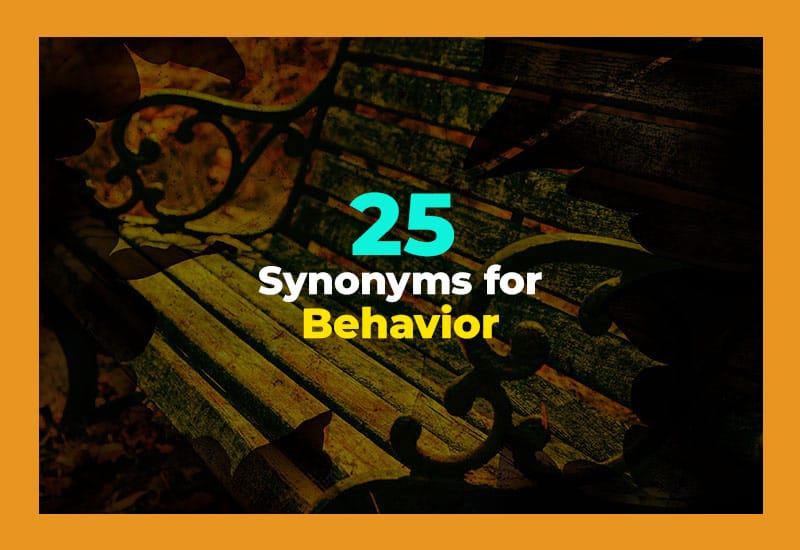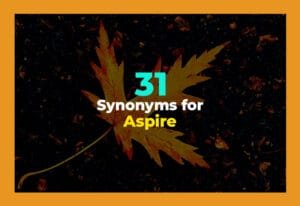You know how we all act in different ways every day? Sometimes we call that “behavior.” But did you know there are many other words you can use instead? Let's explore fun and easy words for behavior with real examples. This will help you sound smart and fresh when you talk or write!
1. Conduct
Conduct means how someone acts or behaves in certain situations. It shows the way a person carries themselves. For example, a student's conduct during class might be quiet and respectful, or noisy and disruptive. When someone has good conduct, it means they are polite and follow rules. Bad conduct can lead to trouble or punishment. So, conduct is the way you control your actions and reactions in different moments.
2. Actions
Actions are the things people do, like moving, talking, or helping others. For example, helping a friend with homework is a kind action. Actions show how someone behaves on the outside. Sometimes, our actions can tell others what kind of person we are without saying a word. Actions are important because they affect other people and situations, so thinking before acting is always a good idea.
3. Manners
Manners are the polite ways people behave with others. For example, saying "please" and "thank you" are good manners. Manners show respect and kindness in everyday life. They help us get along with friends, family, and strangers. When you use good manners, people usually like being around you. Manners can change based on where you live, but being polite is always a good behavior to show.
4. Habits
Habits are behaviors we do regularly, often without thinking. For example, brushing your teeth every morning is a healthy habit. Habits can be good, like exercising, or bad, like biting nails. Because habits happen often, they can shape who we are over time. Changing a habit can be hard, but it's possible if you work at it. So, habits are the small behaviors we repeat every day.
5. Attitude
Attitude is the way a person feels or thinks about something, and it shows in how they act. For example, a positive attitude during a hard test can help you do better. Attitude can be happy, sad, angry, or calm. It changes how we behave with others and in different situations. A good attitude makes life easier and more fun, while a bad attitude can cause problems.
6. Deportment
Deportment means the way someone behaves, especially in public or formal places. For example, a child's deportment at a wedding should be calm and respectful. It shows how well a person controls their body and manners. Good deportment makes a person look polite and confident. People often notice deportment in schools, offices, and ceremonies because it reflects respect for others.
7. Demeanor
Demeanor is the way a person looks or acts that shows how they feel inside. For example, a calm demeanor during a meeting can make others feel relaxed. It includes facial expressions, body language, and tone of voice. A friendly demeanor helps make friends easily. Sometimes, even if someone feels nervous, their demeanor might show they are confident. So, demeanor is the outside way we express ourselves.
8. Conduct
Conduct is how a person behaves, especially in rules or laws. For example, good conduct in school means following rules and being polite. Conduct can be judged as right or wrong based on society's standards. People with good conduct usually gain trust and respect. This word is often used in official places like schools, courts, or work. It helps describe whether behavior is acceptable or not.
9. Reaction
Reaction is how someone responds to something that happens. For example, a surprised reaction to a gift shows excitement. Reactions can be fast or slow and can be feelings, words, or actions. They tell others what we think or feel inside. Sometimes, reactions are automatic, like jumping when scared. Other times, we control our reactions to be polite or calm. Reactions are important in everyday life.
10. Etiquette
Etiquette is the set of rules about polite behavior in society. For example, using a fork and knife properly is part of dining etiquette. Etiquette changes from place to place but always means respect and kindness. Knowing good etiquette helps people feel comfortable and welcomed. It includes greetings, table manners, and how we speak to others. Following etiquette shows we care about others' feelings.
11. Conduct
Conduct describes how a person acts, especially in a group or event. For example, proper conduct at a job interview is being polite and honest. It reflects respect for rules and people around you. Good conduct helps build a good reputation. When conduct is bad, it can lead to trouble or misunderstandings. So, conduct is a simple word for behavior that follows rules and social norms.
12. Bearing
Bearing means the way a person stands, moves, or behaves that shows their attitude. For example, a soldier's bearing is strong and confident. It is about body language and how someone carries themselves. Good bearing can make a person look powerful and calm. It is important in places like school or work because it shows self-control and respect for others. Bearing is a part of behavior you can see easily.
13. Conduct
Conduct is a word to describe how someone behaves, especially in serious or formal situations. For example, a lawyer's conduct in court must be professional and respectful. It shows how well someone follows rules and treats others. Conduct is often checked in schools, workplaces, and public places. Good conduct makes a positive impression, while bad conduct can cause problems. It's a key word for proper behavior.
14. Temperament
Temperament means a person’s usual mood or feelings that affect how they behave. For example, a calm temperament helps people stay peaceful during problems. It shows if someone is often happy, angry, or shy. Temperament is part of who we are, but we can learn to control it better. Understanding temperament helps us know why people act a certain way. It shapes behavior from inside.
15. Conduct
Conduct refers to the way someone behaves or acts in different situations. For example, a teacher's conduct in the classroom should be fair and patient. It shows how we treat others and follow rules. Good conduct helps build trust and respect. This word is often used in schools, workplaces, and social events. Conduct tells if behavior is good or bad according to expectations.
16. Performance
Performance is how well someone behaves or works during a task or activity. For example, an athlete's performance in a game shows their skills and effort. It includes behavior like focus, energy, and attitude. Good performance means doing your best and following rules. It is important in school, work, and sports. Performance can be watched and judged by others.
17. Disposition
Disposition is a person's usual mood or way of behaving. For example, someone with a cheerful disposition is often happy and friendly. It shows how someone usually acts over time. A good disposition makes people enjoy being around you. It is part of personality but focuses on everyday behavior. Disposition can change, but it mostly stays the same in different situations.
18. Conduct
Conduct means how a person acts, especially when rules or manners matter. For example, good conduct in a restaurant means being polite and quiet. It is about behavior that others watch carefully. People with good conduct earn respect and trust. This word is common in schools, offices, and social events. Conduct helps decide if someone's behavior is right or wrong.
19. Gesture
Gesture is a movement of the hands, face, or body to show feeling or meaning. For example, waving hello is a friendly gesture. Gestures are part of behavior and help us communicate without words. They can show happiness, anger, or confusion. Understanding gestures can make talking with others easier. Good gestures make people feel comfortable, while bad ones can cause confusion.
20. Mannerism
Mannerism is a small habit or way of behaving that is typical of a person. For example, biting nails when nervous is a mannerism. Mannerisms show personality and feelings without speaking. Sometimes, people don't notice their mannerisms, but others do. Some mannerisms are good, like smiling, while others can be annoying. Mannerisms make behavior unique and help us understand people better.
21. Conduct
Conduct means how a person behaves, especially about rules or expectations. For example, good conduct at work means being responsible and polite. It shows respect for others and the place you are in. Conduct is important in schools, offices, and public spaces. People notice conduct and decide if someone is trustworthy. It helps keep order and good relationships.
22. Style
Style is the unique way someone behaves or does things. For example, a teacher's style of explaining can be fun and easy to understand. Style shows personality in behavior and actions. It can be seen in how we talk, walk, or work. Everyone has their own style, and it makes them special. Style in behavior helps people remember us and feel connected.
23. Conduct
Conduct is a word that means how someone acts or behaves in different situations. For example, a driver's conduct on the road should be careful and polite. It is about following rules and being safe. Good conduct keeps people safe and happy. This word is used in schools, work, and public places to describe proper behavior. Conduct shows if behavior is good or bad.
24. Conduct
Conduct is how a person acts in a place or event. For example, proper conduct in a library means being quiet and respectful. It helps keep order and peace. Good conduct is about being polite and following rules. People watch conduct to know if someone is behaving well. This word is common in schools, offices, and social gatherings. Conduct is very important for good behavior.
25. Bearing
Bearing means the way someone carries themselves and behaves. For example, a leader's bearing is confident and calm. It shows self-control and respect for others. Bearing is part of how we look and act in public. Good bearing makes people trust and respect you. It is important in places like school, work, and events where first impressions matter.

I hope you enjoyed learning about all these cool words that mean behavior. Using different words helps make talking and writing more fun and clear. Now you can choose the perfect word for any situation to sound smart and friendly. Keep practicing these words, and you will get better every day. Remember, behavior is how we show who we are, so choose your words and actions wisely!









